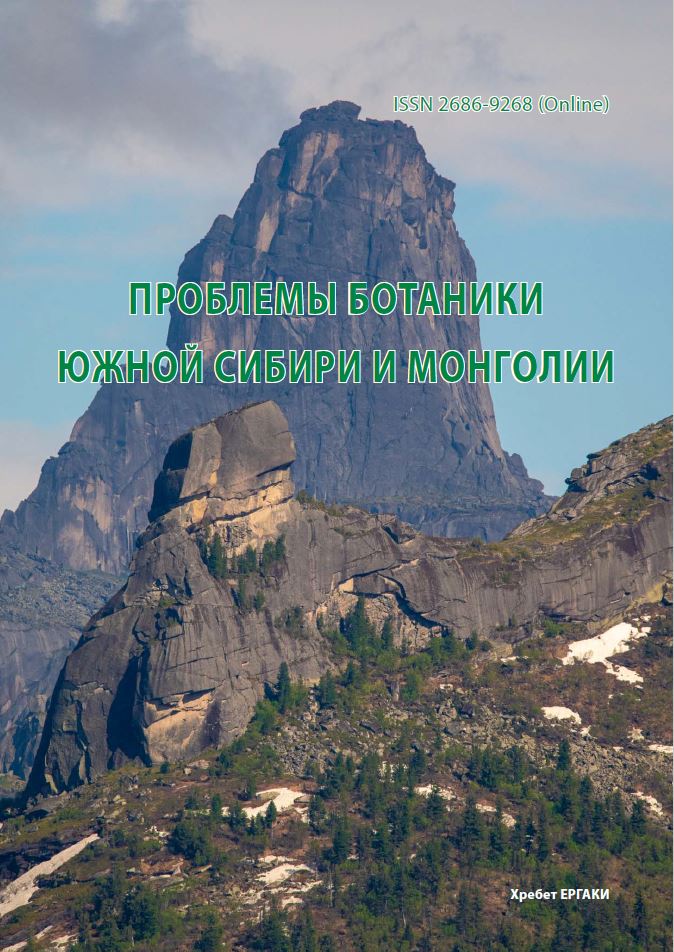Restoration assessment of Scotch pine (Pinus sylvestris L.) at the Krasnoyarsk forest-steppe
УДК 582.475*630*182.21(571.51)
Abstract
The restoration process features of Scotch pine (Pinus sylvestris L.) growing in the Krasnoyarsk forest-steppe pine cenoses have been studied. The study purposes included the abundance and vital status investigation of viable undergrowth in pine cenoses both under control conditions and under anthropogenic impact. The restoration study results of pine regrowth by altitude groups and life condition categories are presented. The contribution of the small, medium, and large regrowth categories to the cenopopulation in various phytocenoses was assessed. The regrowth characteristics are given. It has been established that Scotch pine regrowth with “healthy” category, predominates in almost all the studied plantations. The largest amount of dried undergrowth (2.2 thousand pieces/ha) was noted in the control phytocenosis. The proportion of dry and drying regrowth in phytocenoses under anthropogenic impact ranges from 0 to 30 %, but it is 13 % at control one. However, the pine regrowth individuals’ number with “weakened” category is more than 25 %. It is concluded that at the moment the natural Scotch pine restoration under the canopy of the parent stand proceeds satisfactorily both under anthropogenic influence and in control conditions at the Krasnoyarsk forest-steppe.
Downloads
Metrics
References
Алексеев В. А. Диагностика жизненного состояния деревьев и древостоев // Лесоведение, 1989. - № 4. - С. 51 57.
Виппер В. Н. Влияние подлеска и травяно-кустарничкового покрова на возобновление лиственничных лесов Центральной Якутии. - М.: Наука, 1973. - 63 с.
Казанская Н. С., Ланина В. В., Марфенин Н. Н. Рекреационные леса. - М.: Лесн. пром-сть, 1977. - 96 с.
Побединский А. В. Изучение лесовосстановительных процессов. - М.: Наука, 1966. - 62 с.
Плантариум. Растения и лишайники России и сопредельных стран: открытый онлайн атлас и определитель растений [2007-2023]. URL: https://www.plantarium.ru/ (Дата обращения 24 января 2023).
Приказ Министерства природных ресурсов Российской Федерации «Об утверждении правил лесовосстановления» от 16 июля 2007 г., № 183.2.
Сукачев В. Н., Зонн С. В. Методические указания к изучению типов леса. - М.: Из-во АН СССР, 1961. - 144 с.
Татаринцев А. И., Скрипальщикова Л. Н. Сосновые фитоценозы в зоне многолетнего воздействия антропогенных нагрузок // География и природ. Ресурсы, 2003. - №3. - С. 53-57.



